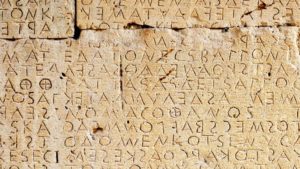Machine learning has been used to automatically translate long-lost languages. Some languages that have never been deciphered could be the next ones to get the machine translation treatment.
 Enter Jiaming Luo and Regina Barzilay from MIT and Yuan Cao from Google’s AI lab in Mountain View, California. This team has developed a machine-learning system capable of deciphering lost languages, and they’ve demonstrated it by having it decipher Linear B—the first time this has been done automatically. The approach they used was very different from the standard machine translation techniques.
Enter Jiaming Luo and Regina Barzilay from MIT and Yuan Cao from Google’s AI lab in Mountain View, California. This team has developed a machine-learning system capable of deciphering lost languages, and they’ve demonstrated it by having it decipher Linear B—the first time this has been done automatically. The approach they used was very different from the standard machine translation techniques.
The constraint they use has to do with the way languages are known to evolve over time.
The idea is that any language can change in only certain ways—for example, the symbols in related languages appear with similar distributions, related words have the same order of characters, and so on. With these rules constraining the machine, it becomes much easier to decipher a language, provided the progenitor language is known.
But the big advantage of machine-based approaches is that they can test one language after another quickly without becoming fatigued. So it’s quite possible that Luo and co might tackle Linear A with a brute-force approach—simply attempt to decipher it into every language for which machine translation already operates.
Pages
- About Philip Lelyveld
- Mark and Addie Lelyveld Biographies
- Presentations and articles
- Tufts Alumni Bio